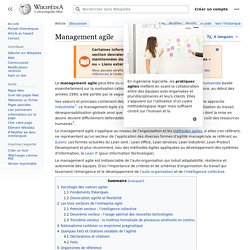

An Extensive Guide To Web Form Usability - Smashing UX Design. Advertisement Contrary to what you may read, peppering your form with nice buttons, color and typography and plenty of jQuery plugins will not make it usable.

Indeed, in doing so, you would be addressing (in an unstructured way) only one third of what constitutes form usability. In this article, we’ll provide practical guidelines that you can easily follow. These guidelines have been crafted from usability testing, field testing, website tracking, eye tracking, Web analytics and actual complaints made to customer support personnel by disgruntled users. Why Web Form Usability Is Important The ISO 9241 standard defines website usability as the “effectiveness, efficiency and satisfaction with which specified users achieve specified goals in particular environments.” Let’s clarify this last point by discussing the three main uses of forms. Uses of forms, based on Luke Wroblewski’s Web Form Design: Filling in the Blanks2. Thus, the relationship between forms and usability have two aspects: 1. 2.
Design Strategy. Social Design Strategy. Great products and services depend on their users having great experiences.

But it’s not about what users do or how they do it, but rather why. Why they do what they do, why they keep coming back, and why they tell their friends. And social design aims to explain the why behind great experiences. I’ll tell you a quick story. Strand Book Store in NYC is apparently very famous, but I had never heard of it (and I’m from the New York area, too) until earlier this year when I was walking around with a friend and she pointed it out to me. That story in and of itself is not a big deal. In these cases and when we are faced with more subjective questions such as, “Where’s a good Italian restaurant?” Communities are very useful. And though we have all kinds of relationships in our lives—with coworkers, neighbors, or brands, and long lasting or short lived, formal or intimate—it’s with our strongest ties that our trust lies.
Trust is built through this conversation. Building Conversation Listening. How To Build An Agile UX Team: Integration - Smashing UX Design. Advertisement This is the final part in a three-part series on how to build and grow successful user experience teams in agile environments.

It covers challenges related to organization, hiring and integration that plague UX teams in these situations. The perspective is that of a team leader, but the tactics described can be applied to multiple levels in an organization. Part 1 in this series discussed how an agile UX team should fit in your organization in order for it to succeed, and part 2 went over how to hire designers who will propel their scrum teams to success. In this third part, we’ll discuss how to integrate the UX designer into the agile process and team structure. For many designers, coming into an agile environment feels like settling in a new country. Rituals Are Critical To Integration Developers, designers, product managers: all need to work together. First and foremost, participation in agile’s rituals is imperative for the designer on your scrum team. Conclusion (al)
Management agile. Le management agile peut être vu comme une organisation de type holistique et humaniste basée essentiellement sur la motivation rationnelle des ressources humaines.

Son émergence, au début des années 1990, a été portée par la vague des nouvelles technologies (NTIC). Ses valeurs et principes combinent des aspects sociologiques et technologiques à une approche industrielle[1]. Le management Agile s’oppose aux fondements du taylorisme : parcellisation du travail, déresponsabilisation globale ainsi que d'autres principes de productivité individuelle dont la mise en œuvre devient difficilement défendable dans les pays industrialisés, compte tenu du coût des ressources humaines[2]. Le management agile est indissociable de l'auto-organisation qui induit adaptabilité, résilience et autonomie des équipes. D'où l'importance de critères et de schémas d'organisation du travail qui favorisent l'émergence et le développement de l'auto-organisation et de l'intelligence collective. Portail du management.